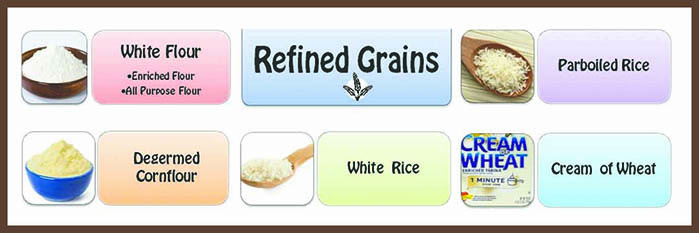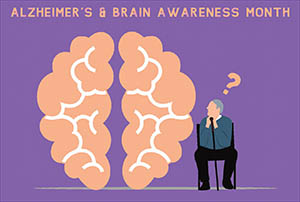Whole grains are products made from 100% of the entire grain kernel – the bran, germ and endosperm.

Refined grains have been milled, a process that removes the bran and germ.
By Alison Crane
When trying to eat a balanced diet, My Plate has recommendations depending on age, sex, and level of physical activity. Any food made from wheat, rice, oats, cornmeal, barley, or another cereal grain is a grain product. While amounts needed vary based on individual need, what does not vary is making at least half our grains whole.
Grains are divided into two subgroups: Whole Grains and Refined Grains.
- Whole grains are products made from 100% of the entire grain kernel – the bran, germ and endosperm. These parts of the whole grain contain naturally occurring nutrients that can reduce the risk of chronic diseases and help manage your weight.
- Refined grains have been milled, a process that removes the bran and germ. This is done to give grains a finer texture and improve their shelf life, but it also removes dietary fiber, iron, and many B vitamins.
Refined grains will often be enriched to replace the B vitamins and iron, but they do not add back the fiber. When compared to refined grains, whole grains take longer to digest because your body works to break down all the parts and nutrients found in these products.
A slower digestion time also promotes better blood glucose and insulin levels plus leaves you feeling satisfied longer. Examples of whole grains include whole-wheat flour, bulgur (cracked wheat), oatmeal, whole cornmeal, and brown rice.
When you are looking for whole grain foods look for foods that have the whole grain stamp. If the stamp says 100% whole grain, then all the grain products must be whole grain and provide at least 16 grams per serving. A basic whole grain stamp must contain at least 8 grams of whole grains.
Not all products will have the whole grain label on them. Read the ingredients list and choose products that list a whole grain ingredient first. Also, keep in mind that color is not a perfect indicator. Brown foods can contain molasses, food coloring or other ingredients that give the appearance of being a whole grain product.
Finally, educate yourself on watch words – multi-grain, 100% wheat or stone ground does not automatically make a food whole grain.
If you would like to learn more about how to increase whole grains in If you would like to learn more about how to increase whole grains in your diet, use this link for the handout, Whole Grains for Health –https://www.uaex.edu/publications/pdf/FCS816.pdf or visit our website www.uaex.edu for healthy cooking and recipes. Like our Facebook page GarlandExtensionHomeLife for more ways to be healthy or call 501-623-6841.
Alison Crane is a Family and Consumer Science Agent with the Garland County Extension Service. The University of Arkansas System Division of Agriculture offers all its Extension and Research programs to all eligible persons without regard to race, color, sex, gender identity, sexual orientation, national origin, religion, age, disability, marital or veteran status, genetic information, or any other legally protected status, and is an Affirmative Action/Equal Opportunity Employer.













